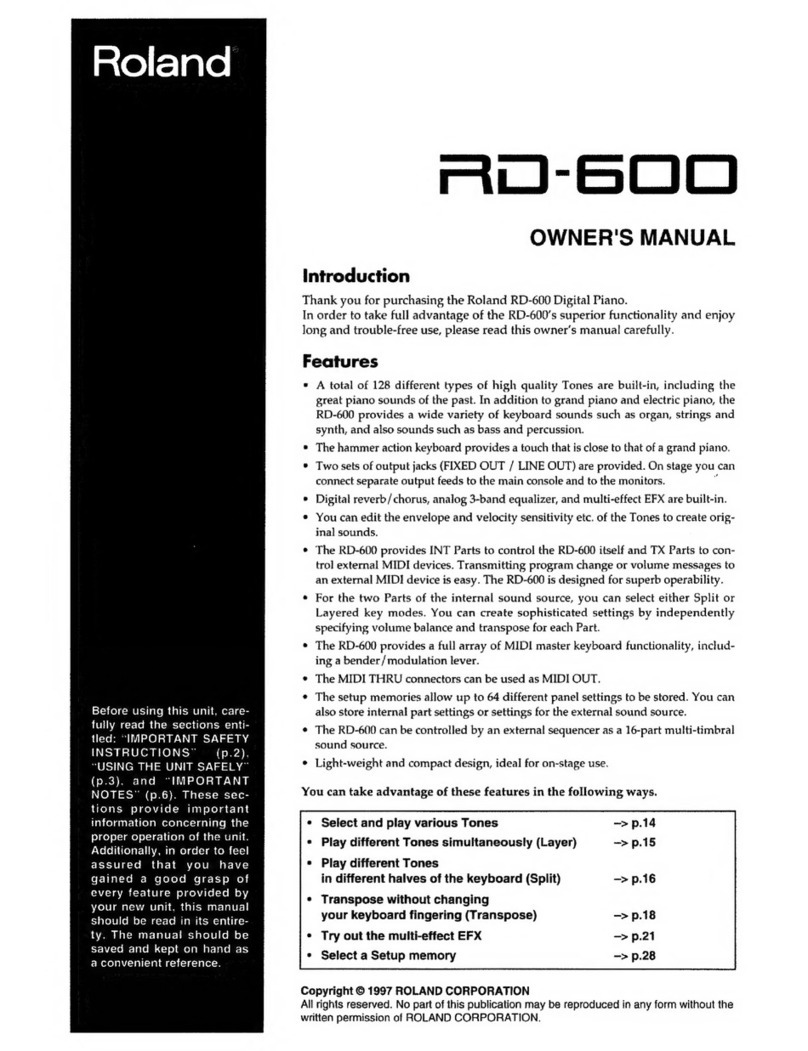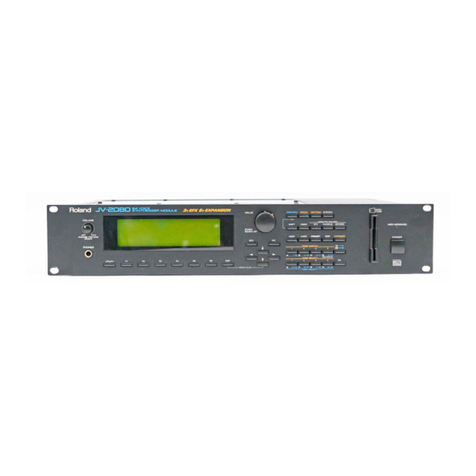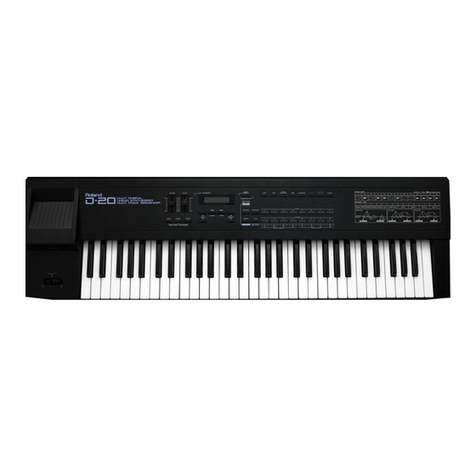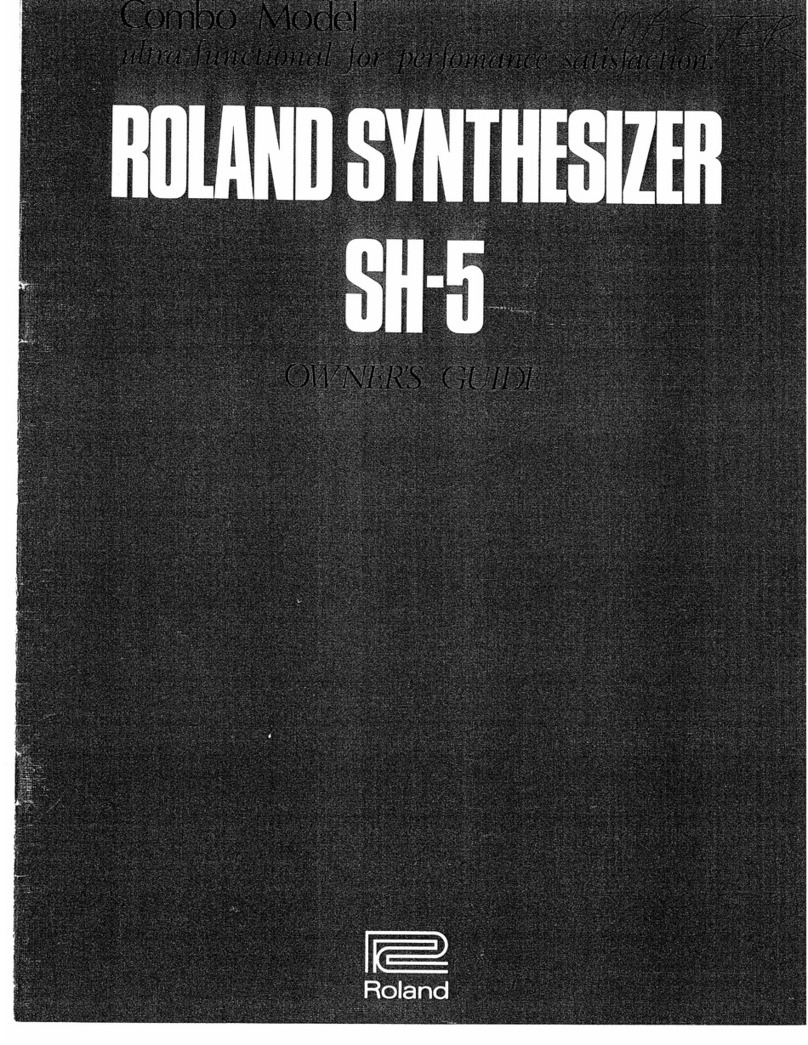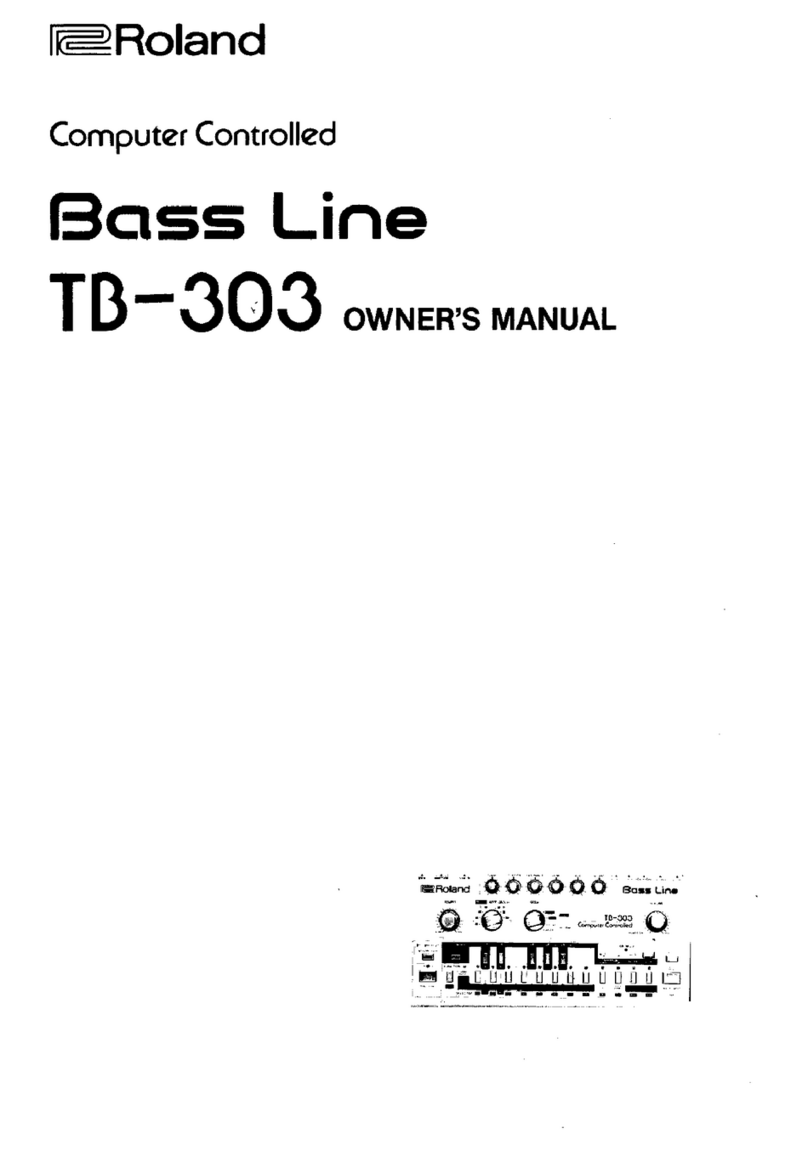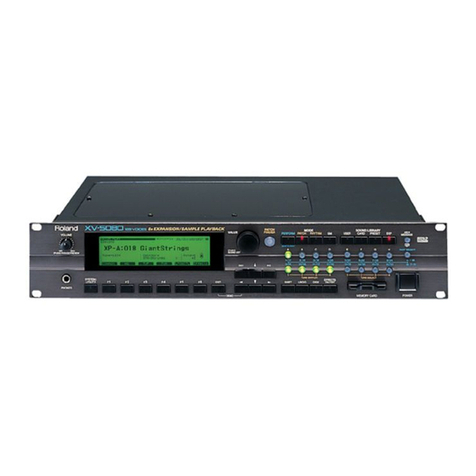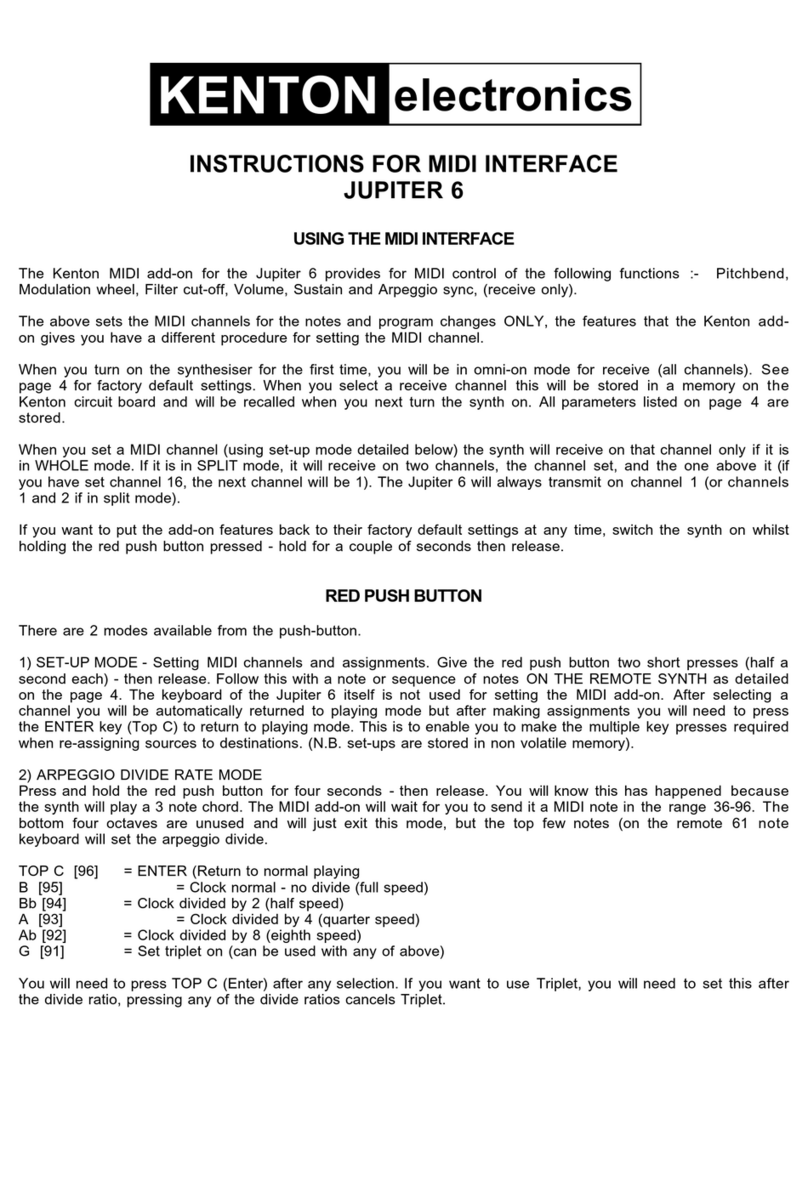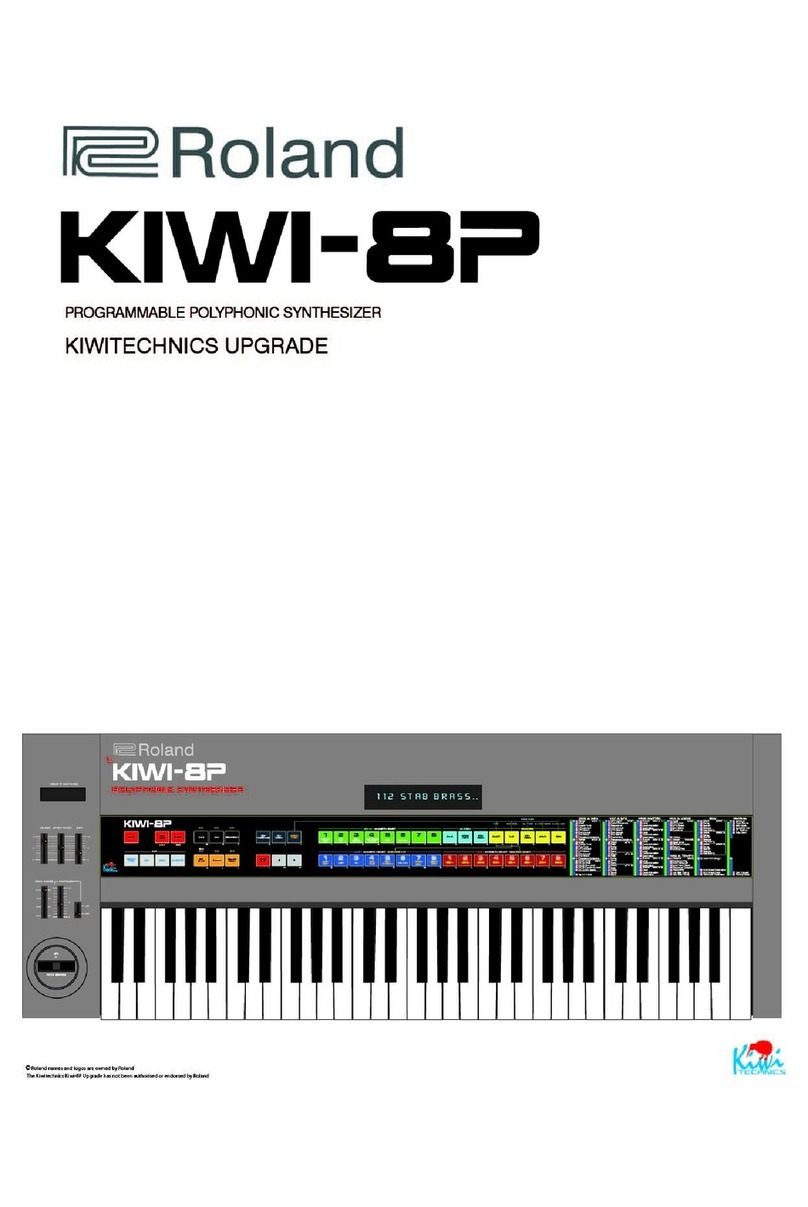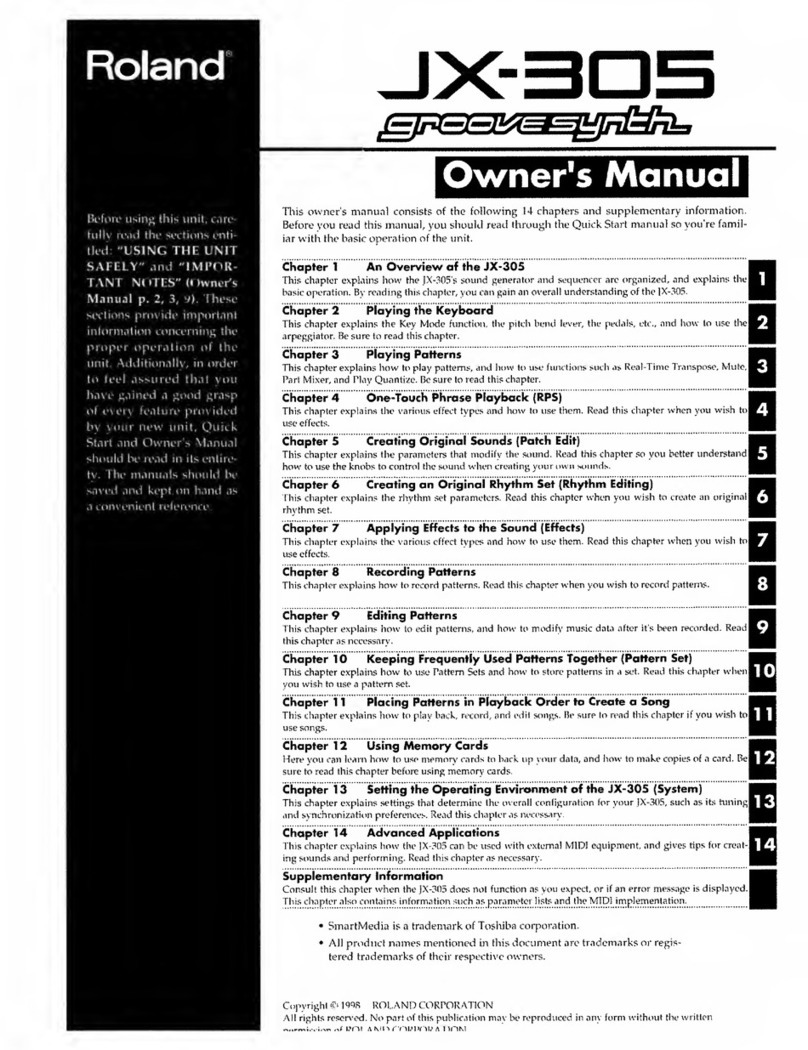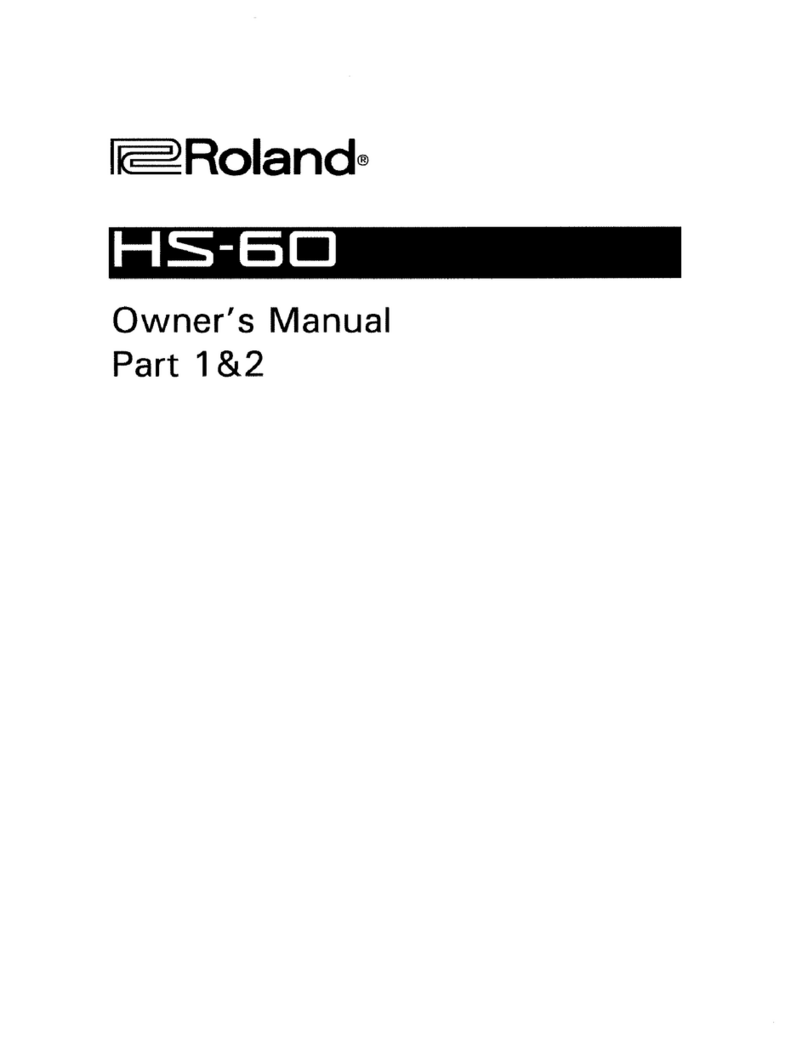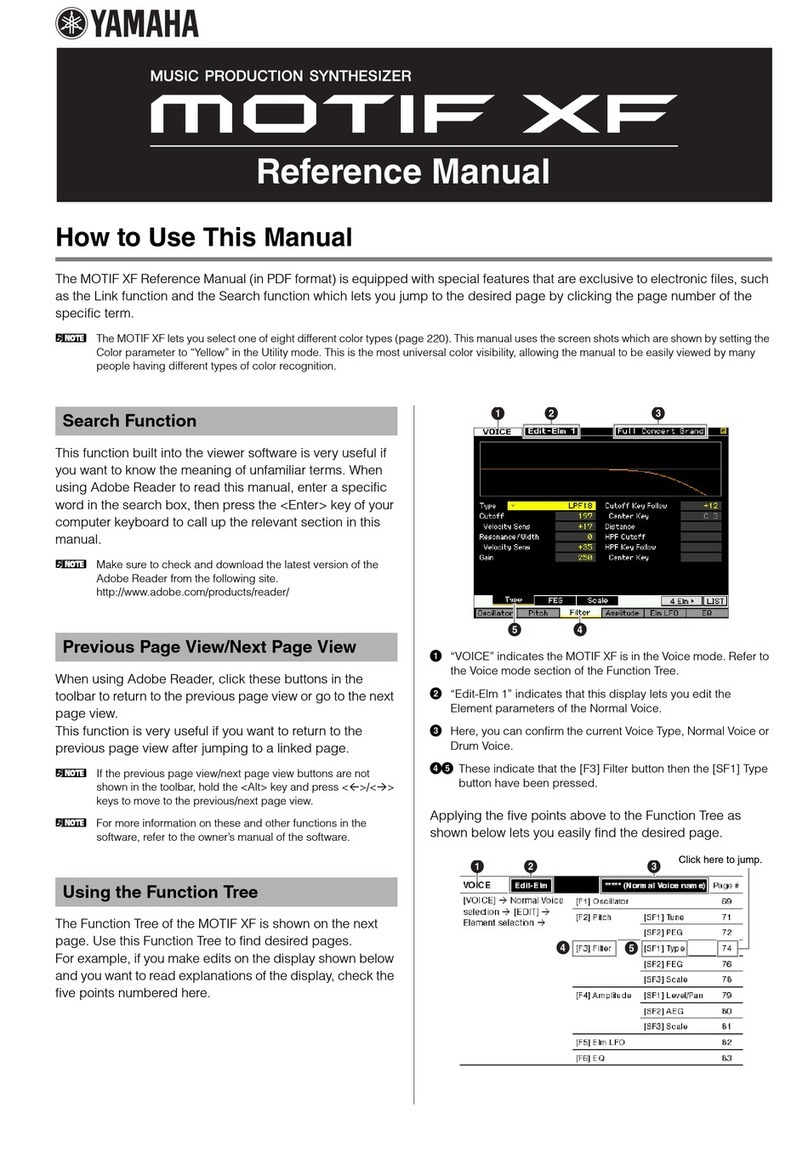
165 ADJUSTMENT
OSCILLATOR
0. 1/0.5 He M-165
DUAL-TRACE
OSCILLOSCOPE This adjustment needs ultra low frequency (0.1-0.5Hz)
square waveforms of TTL level (OV and 5V), which
may not be available from ordinary test oscillators and
dual-trace osilloscope. Consequently, some possible al-
ternatives are illustrated.
M-132
(« ###-'
I1,n
w#9
1Ii-h’
QI•o
Roland
NOTE: Refer to
ALTERNATIVE-3
for single-beam
scope.
MAIN BOARD
©TM6
©TM1
GTM3
0TM5
PORTAMENTO TIME
The same procedures are applicable to both CH-1 and
CH-2. First, adjust CH-1, then CH-2 looking CH-1
waveforms as standard.
More to the point, synchronize all phases of CH-1 and
CH-2 overlapped on the screen.
•ONE SECOND
Patch Instruments and set M-132 and M-165 as
shown. M-132 MIXER-2 SIG IN 3to 0(OV).
Set test oscillator to 0.5Hz.
Adjust TM-1 (TM-3) on MAIN BOARD so that the
times required for horizontal line on the scope to
reach from OV to -i-5V and from -i-5V to OV are one
second each, (see below)
•FIVE SECOND
Set oscillator to 0.1 Hz.
Set M-132 MIXER-2 SIG IN 3to 10 (10V).
Adjust TM-6 (TM-5) on MAIN BOARD so that the time required for horizontal line
to reach -t5V or to return to OV is five seconds.
TM-1 (TM-3) and TM-6 (TM-5) interact. Repeat the adjustments, maybe 3-5 times.
M-150 (140)
'v »
ALTERNATIVE-1 TEST OSCILLATOR
If the MC-4 is available, use its CV output.
CVDATA; 0=OV STEP TIME: 2000 =0.1 Hz
60=5V 400= 0.5Hz
120 =10V Other paremeters: Initial setting
ALTERNATIVE-2 TEST OSCILLATOR
This setup makes SYSTEM-1 OOM 150 and 132 atest oscillator.
1. (Do not connect Patch (J) yet)
Adjust M-132 MIXER-1 out for 5Vp-p.
2. (scope time base 0.2s/cm)
Adjust M-150 FREQ (approx, at 9) for 0.5Hz.
|«- 1sec 1sec
3. Add Patch (T).
(scope time base 0.5s/cm)
4. Adjust M-132 -OUT (approx, at 3) for 0.1 Hz.
h5sec -4' 5sec H
SYSTEM-100M 165 MAR. 25,1983
M-150 (140)
000 00 OSCILLATOR
or
MC-4
See NOTE below
SINGLE-BEAM
OSCILLOSCOPE
M-165
B
'~. Wo
M-132
5]
TI
»mmmT'
*r,nr
—1>-p
-OUT
1
1Roland |
ALTERNATIVE-3 USING SINGLE-BEAM SCOPE
1. Do not connect HIN yet.
2. Set scope VIN to GND and RANGE to 1V/cm.
3. Position scope spot as shown below.
4. Connect scope HIN to M-165 PORTA-2 CV OUT.
5. Set scope VIN to DC.
NOTE:
When using the oscillator
or the MC-4, refer to the
left for test signal setup.
__
1y-
1
.
I
.
..
.... ..._t
-L
|_
!1, 1;
J
PORTAMENTO-1
•ONE SECOND
1. Disconnect Patch (J) (dotted line).
2. Set M-132 MIXER-2 SIG IN 3knob to 0(OV).
3. Set M-165 changeover switches;
PORTAMENTO-1 to ON and PORTAMENTO-2 to OFF
4. Turn TM-1 CW until display stops (foldover) for aperiod at points (J)and
(^, then reverse TM-1 slightly just enough for smooth beam running with-
out reducing displayed Vamplitude (5Vp-p).
•FIVE SECOND
1. Connect Patch(3)(dotted line).
2. Set M-132 MIXER-2 SIG IN 3to 10 (10V).
3. Similarly, adjust TM-6 for smooth sweep running without reducing vertical
amplitude.
4. TM-1 and TM-6 will interact. Repeat these adjustments until no improve-
ment is noted.
rrr t
—&1:
i
j
:
I
'
'
!ii
I^.u
PORTAMENTO-2
•ONE SECOND
1. Disconnect Patch(T)(dotted line).
2. Set M-165 PORTAMENTO-2 to ON.
3. Set M-132 MIXER-2 SIG IN 3to 0.
4. Adjust TM-3 so that Lissajous is single line as possible.
•FIVE SECOND
1. Connect Patch(T)(dotted line).
2. Set M-132 MIXER-2 SIG IN 3to 10.
3. Similarly, adjust TM-5 for single line trace.
4. TM-3 and TM-5 will interact. Repeat these adjustments until no improve-
ment is noted.
4



